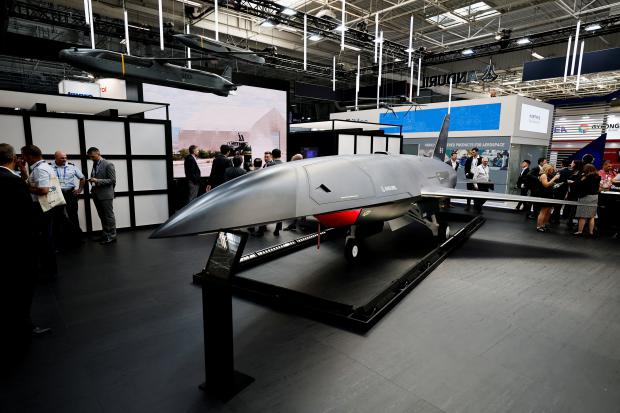
Breaking News
 This roof paint blocks 97% of sunlight and pulls water from the air
This roof paint blocks 97% of sunlight and pulls water from the air
 'Venomous' Republican split over Israel hits new low as fiery feud reaches White House
'Venomous' Republican split over Israel hits new low as fiery feud reaches White House
 Disease-ridden monkey that escaped from research facility shot dead by vigilante mom protecting...
Disease-ridden monkey that escaped from research facility shot dead by vigilante mom protecting...
 Hooters returns - founders say survival hinges on uniform change after buying chain...
Hooters returns - founders say survival hinges on uniform change after buying chain...
Top Tech News
 The 6 Best LLM Tools To Run Models Locally
The 6 Best LLM Tools To Run Models Locally
 Testing My First Sodium-Ion Solar Battery
Testing My First Sodium-Ion Solar Battery
 A man once paralyzed from the waist down now stands on his own, not with machines or wires,...
A man once paralyzed from the waist down now stands on his own, not with machines or wires,...
 Review: Thumb-sized thermal camera turns your phone into a smart tool
Review: Thumb-sized thermal camera turns your phone into a smart tool
 Army To Bring Nuclear Microreactors To Its Bases By 2028
Army To Bring Nuclear Microreactors To Its Bases By 2028
 Nissan Says It's On Track For Solid-State Batteries That Double EV Range By 2028
Nissan Says It's On Track For Solid-State Batteries That Double EV Range By 2028
 Carbon based computers that run on iron
Carbon based computers that run on iron
 Russia flies strategic cruise missile propelled by a nuclear engine
Russia flies strategic cruise missile propelled by a nuclear engine
 100% Free AC & Heat from SOLAR! Airspool Mini Split AC from Santan Solar | Unboxing & Install
100% Free AC & Heat from SOLAR! Airspool Mini Split AC from Santan Solar | Unboxing & Install
 Engineers Discovered the Spectacular Secret to Making 17x Stronger Cement
Engineers Discovered the Spectacular Secret to Making 17x Stronger Cement
Anduril drones won't close US Air Force's China gap

Anduril's maiden flight of its YFQ-44A signals a fierce sprint to field AI-enabled wingmen, as the US Air Force races to plug a historic fighter shortfall it can't easily build its way out of.
This month, multiple media outlets reported that Anduril's YFQ-44A prototype drone, a contender in the US Air Force's Collaborative Combat Aircraft (CCA) program, has completed its maiden flight at a California test site, officials said, marking the second CCA vehicle to enter flight trials after General Atomics' YFQ-42A flew in August.
The semiautonomous aircraft, derived from technology acquired from Blue Force Technologies in 2023, is designed to fly alongside crewed fighters such as the F-22 and F-35, extending their reach and striking power while supporting missions ranging from strike and reconnaissance to electronic warfare.
US Air Force Secretary Troy Meink said the milestone provides critical performance data to shape requirements, reduce risk and accelerate delivery of AI-enabled wingmen capable of operating at scale.
Anduril executives highlighted the drone's autonomy, stressing it was not built for remote piloting but to execute mission plans, manage flight controls and land with minimal human oversight. The company plans to begin live weapons testing next year and prototype-scale production in 2026 at its new Arsenal-1 facility in Ohio.
The US Air Force aims to field at least 1,000 CCAs by decade's end, moving rapidly to develop teaming tactics and integration concepts at Edwards and Nellis Air Force Bases as part of its next-generation air dominance push.
The CCA program comes at a time when the US may be facing a massive fighter shortage, with ramping up production of manned fighters an increasingly unfeasible option to close the gap. To illustrate, an F-35 costs US$81 million in 2025, while each CCA is estimated to cost $25-30 million.



